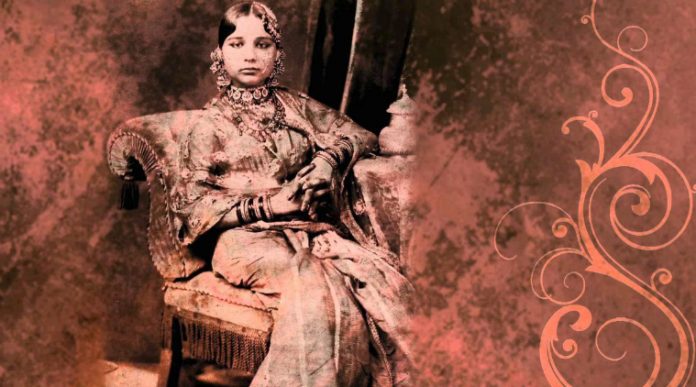By Sahana Ghosh
Kolkata, (IANS): A documentary that depicts the last queen of Awadh, Begum Hazrat Mahal’s contributions to the First War of Independence and her resistance to the British, will be screened in the Nepalese capital Kathmandu, where the “warrior queen” lived in exile for 20 years until her death 138 years ago.
“The family has been formally invited by the Indian Embassy in Nepal to pay tributes and also to screen the documentary on April 7 on the occasion of her 138th death anniversary,” Manzilat Fatima, the great-great-granddaughter of Hazrat Mahal, told IANS.
Fatima said the begum, one of the younger queens of Nawab Wajid Ali Shah, was a freedom fighter who made major contributions to the 1857 War of Independence but is not celebrated in the same way as Rani Lakshmibai of Jhansi.
The 26-minute Hindi documentary titled “Begum Hazrat Mahal: The Last Queen of Avadh (The first woman revolutionary of India’s War of Independence)” and made by filmmaker Mohiuddin Mirza, has been produced by Films Division and Fatima was keen to screen it for awareness.
“The film was made a few years back and it was kept in cold storage. I realised some awareness must be created among the people and especially the youth… there are freedom fighters who are not remembered,” Fatima said.
Hazrat Mahal took “active part in the defence” of Lucknow against the British, according to the book “Freedom Fighters of India” edited by M.G. Agrawal.
She took charge of the affairs of the state after the British annexed it in 1856, exiling the nawab, and leaving the kingdom without a leader, in a chaotic mess. She crowned her son, Birjis Qadr, as the royal heir of Awadh.
“Although she was queen and was used to a life of luxury, she appeared on the battlefield herself to encourage her troops,” the book notes.
Simmi Jain in the “Encyclopedia of Indian Women Through The Ages (period of freedom struggle)” notes that Hazrat Mahal had challenged the British monarch, Queen Victoria, by issuing a counter-proclamation against her.
Jain writes in the book: “After the mutiny was quelled, the Queen of England issued a proclamation to appease the people. Begum issued a counter proclamation challenging the truth and sincerity of the promises made by the English queen. She also warned people not to believe these promises ‘for it is the unvarying custom of the English never to forgive a fault, be it great or small’.”
She held out against the British with all her strength as long as she could.
Ultimately, she escaped to Nepal with her son and a clutch of followers under adverse circumstances in 1859.
The book says the Nepalese authorities were initially reluctant to provide asylum to the rebels. She faced many difficulties in the country.
She maintained her opposition through 20 years of exile in Nepal, until her death in 1879.
“She was one of the first few leaders who took on the British in the mutiny of 1857. She was known for her military and administrative abilities. Mahal fought for her country. Many incentives were offered by the British… but she turned down everything because she didn’t want to compromise. She chose to live miserably in Kathmandu — in a foreign land,” Fatima said.
A pearl-adorned and embroidered “chadar” will be placed on the begum’s grave in Kathmandu by her descendants on April 7, Fatima added.


